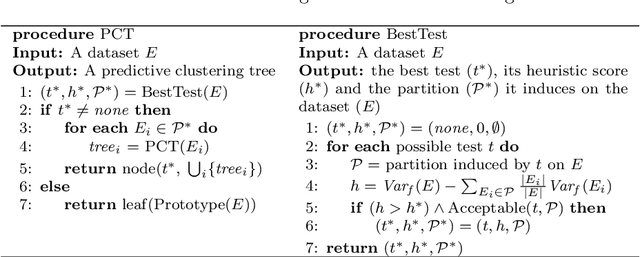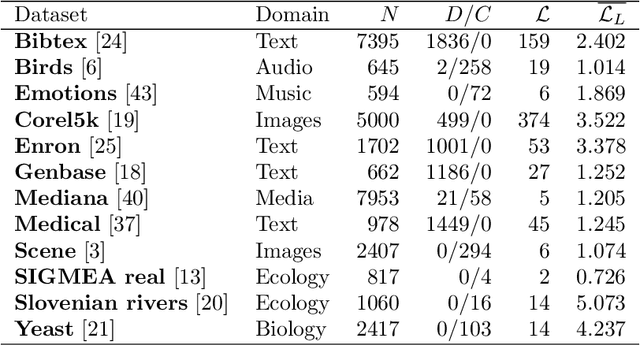Michelangelo Ceci
Semi-supervised Predictive Clustering Trees for (Hierarchical) Multi-label Classification
Jul 19, 2022



Abstract:Semi-supervised learning (SSL) is a common approach to learning predictive models using not only labeled examples, but also unlabeled examples. While SSL for the simple tasks of classification and regression has received a lot of attention from the research community, this is not properly investigated for complex prediction tasks with structurally dependent variables. This is the case of multi-label classification and hierarchical multi-label classification tasks, which may require additional information, possibly coming from the underlying distribution in the descriptive space provided by unlabeled examples, to better face the challenging task of predicting simultaneously multiple class labels. In this paper, we investigate this aspect and propose a (hierarchical) multi-label classification method based on semi-supervised learning of predictive clustering trees. We also extend the method towards ensemble learning and propose a method based on the random forest approach. Extensive experimental evaluation conducted on 23 datasets shows significant advantages of the proposed method and its extension with respect to their supervised counterparts. Moreover, the method preserves interpretability and reduces the time complexity of classical tree-based models.
Temporal Pattern Mining from Evolving Networks
Sep 20, 2017Abstract:Recently, evolving networks are becoming a suitable form to model many real-world complex systems, due to their peculiarities to represent the systems and their constituting entities, the interactions between the entities and the time-variability of their structure and properties. Designing computational models able to analyze evolving networks becomes relevant in many applications. The goal of this research project is to evaluate the possible contribution of temporal pattern mining techniques in the analysis of evolving networks. In particular, we aim at exploiting available snapshots for the recognition of valuable and potentially useful knowledge about the temporal dynamics exhibited by the network over the time, without making any prior assumption about the underlying evolutionary schema. Pattern-based approaches of temporal pattern mining can be exploited to detect and characterize changes exhibited by a network over the time, starting from observed snapshots.
 Add to Chrome
Add to Chrome Add to Firefox
Add to Firefox Add to Edge
Add to Edge